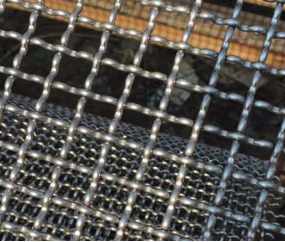nails for wooden fence panels
Choosing the Right Nails for Wooden Fence Panels
When it comes to constructing a wooden fence, selecting the appropriate materials is essential for ensuring longevity, stability, and aesthetic appeal. One of the most critical components in this process is choosing the right nails for wooden fence panels. While they might seem like a minor detail, the type of nails you use can significantly affect the durability and performance of your fence.
Understanding the Importance of Nail Selection
Wooden fences are exposed to various environmental elements, including rain, snow, wind, and sunlight. These factors can cause wood to expand, contract, twist, and split over time. Therefore, the nails you choose must withstand these challenges and maintain the integrity of the panels and the overall structure. Using subpar or inappropriate nails can lead to loose panels, rusting, or even complete structural failure.
Types of Nails
1. Common Nails These are the most frequently used nails in woodworking. They have large heads and are designed for holding wooden pieces together. However, common nails may not be the best choice for outdoor fences, as they can rust when exposed to moisture.
2. Galvanized Nails Galvanized nails are coated with a layer of zinc, which provides excellent resistance to rust and corrosion. This makes them ideal for outdoor applications, including wooden fences. When constructing a fence, always opt for hot-dipped galvanized nails as they offer superior rust resistance compared to electro-galvanized options.
3. Stainless Steel Nails If you're building a high-end fence or live in an area with harsh weather conditions, stainless steel nails are highly recommended. They are exceptionally resistant to rust and corrosion and ensure a long-lasting bond. However, they can be more expensive than other options, so budget considerations may come into play.
4. Cedar and Redwood Nails If your fence is made from cedar or redwood, it is advisable to use specially designed nails. These nails are coated to prevent the reaction between the wood's natural oils and the metal, which can lead to discoloration or corrosion.
nails for wooden fence panels

Nail Length and Size
Choosing the right nail length and size is equally important as selecting the type of nail. For standard wooden fence panels, a nail length of 3 to 4 inches is generally recommended. The size of the nail should allow it to penetrate deep enough into the fence post while securely fastening the panel. This depth contributes to the overall strength and stability of the fence.
Nail Application Techniques
Besides the selection of nails, proper application techniques can also prevent common issues associated with wooden fences. Here are some tips
- Pre-drilling For hardwoods or dense timber, pre-drilling holes for nails can prevent splitting. This technique allows the nail to penetrate without causing damage to the wood.
- Nailing Pattern Employ an appropriate nailing pattern to enhance the structural integrity of the fence. Typically, a staggered nailing pattern distributes stress evenly across the panels and reduces the risk of warping or bending.
- Consider Using Screws While nails are traditional for fence building, screws may offer superior holding power. They can be easier to remove if adjustments to the fence are necessary. If you decide to use screws, ensure they are also galvanized or stainless steel for outdoor use.
Conclusion
In summary, the choice of nails plays a crucial role in the strength, durability, and overall performance of wooden fence panels. Always opt for galvanized or stainless steel nails to guard against rust and ensure your fence withstands the test of time. Additionally, pay attention to nail length, size, and application techniques to secure a sturdy build. By investing time in selecting the right nails, you can ensure that your wooden fence remains a beautiful and functional addition to your property for years to come. Whether you are a seasoned contractor or a DIY enthusiast, the right nails are essential for achieving the best results in your fencing project.
-
Space-Saving Chain Fence Hacks Vertical Gardening with Cyclone MeshNewsJul.16,2025
-
Innovations in Iron Nail Wire Production for Modern ConstructionNewsJul.16,2025
-
Creative Uses of Wire Netting Fence in Modern Landscape DesignNewsJul.16,2025
-
Barbed Wire Fence Innovations in Anti-Climb TechnologyNewsJul.16,2025
-
Architectural Uses of Umbrella Nails for Aesthetic Roof DesignsNewsJul.16,2025
-
Architectural Uses of Razor Barbed Wire in Secure Urban DesignNewsJul.16,2025




